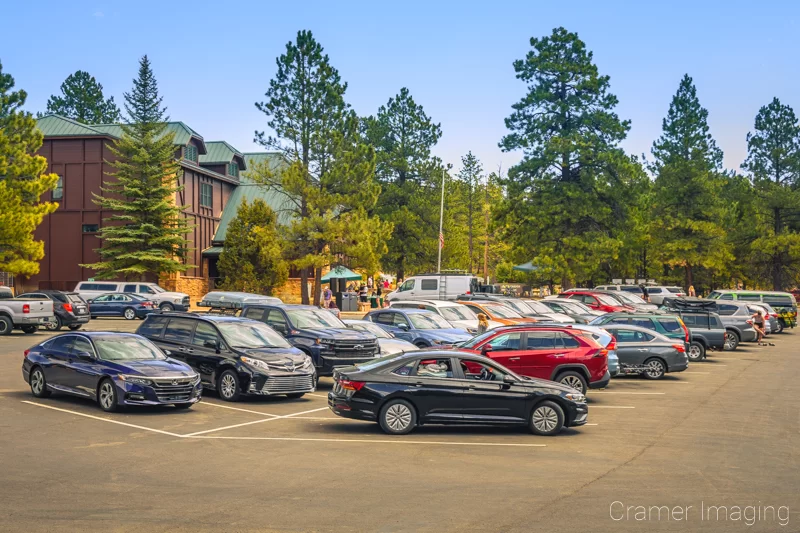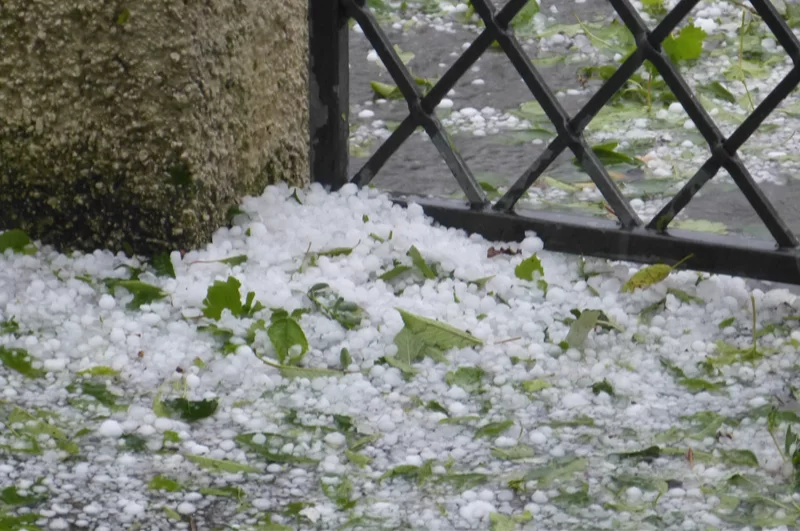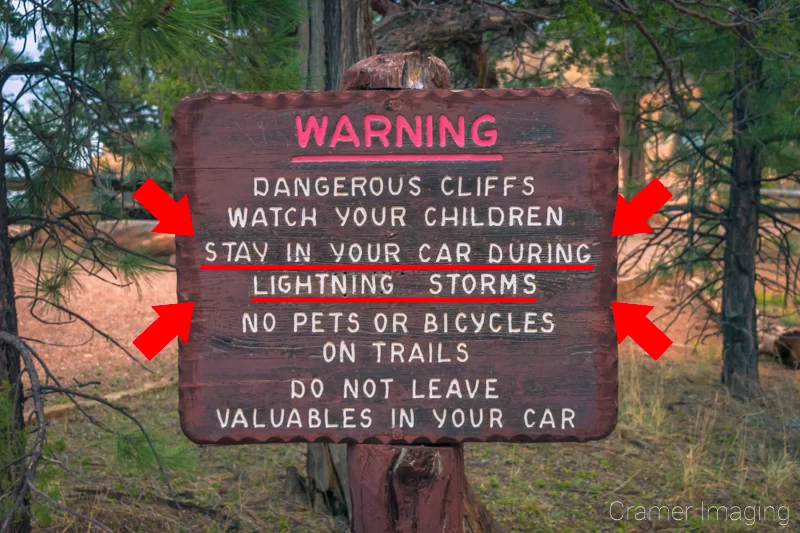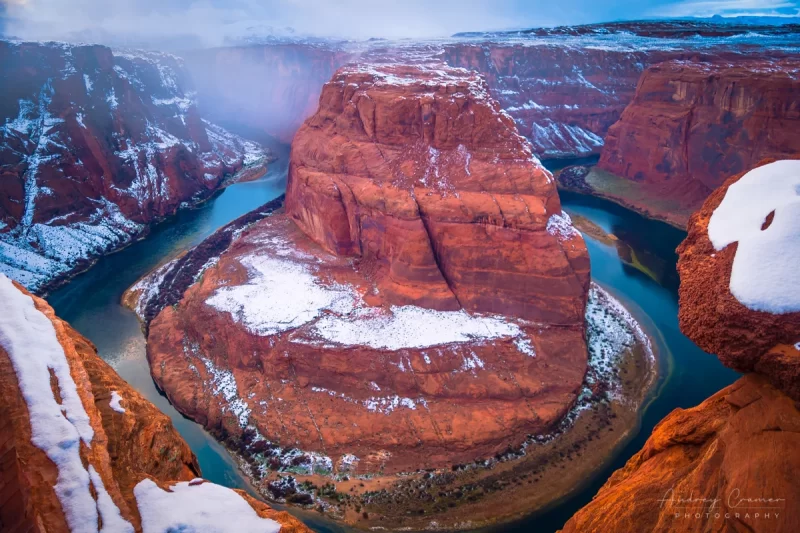Being a landscape photographer seems like a dream profession for some people. Indeed, I find there’s probably little to nothing out there which I would enjoy more professionally. However, being a landscape photographer does come with some down sides. Here are 10 hazards of being a landscape photographer which you might not have thought of.
1. Broken/Lost/Stolen Camera Gear
You might not think of this as a hazard, but many landscape photographers must worry about concerns like these. We buy expensive cameras, lenses, and other gear which we bring onsite with us. We hike to remote locations which may take hours to days to reach. Imagine how unhappy we are to haul in lots of heavy gear (this is bare minimum gear for weight reasons) only to find that the lens we want to use broke on the way. So much time and energy wasted on something possibly preventable but also accidental.

Landscape photographers are human too. We lose things. We even lose our camera equipment if we’re not careful. Mostly we lose little and easily replaceable things. However, we can also lose the more expensive parts of our rig due to negligence, carelessness, accident, or more. We’re not immune from thieves breaking into our cars to steal our equipment either. The cameras and other gear we use come with big price tags. Some people look at our equipment as an instant pay-day. It’s heartbreaking and infuriating when any of these instances happen to us. But it’s one of the hazards we face.
2. People and Cars
Perhaps this particular landscape photography hazard is obvious. Perhaps it is not. Still, landscape photographers deal with this hazard frequently. Many photos worth getting require a landscape photographer to stand someplace where other people congregate. Sometimes those worthwhile photos require standing on or near a road, parking lot, or other location accessible to motor vehicles. We must pay attention to our surroundings while not impeding traffic. We do not want to risk ourselves or others in pursuit of the next big photo.

Some people are kind and thoughtful when noticing our attempts to photograph a scene. Others are rude and hog the scene for themselves. Still others attempt to photo-bomb (not cool by the way). Yet others don’t even notice our presence for one reason or another. Landscape photographers never know what kind of person/people they will encounter nor how polite, rude, or even aggressive such people will be. Things get worse when those hostile individuals are behind the wheel of a car.
3. Wild Animals
You’ll find that wild animals are another hazard of being a landscape photographer. You might find this odd. After all, landscape photographers often also pursue wildlife photography. Having a moose in frame with the Tetons about guarantees the photo will do well. So, why are wild animals a hazard for landscape photographers? Simply put, because we’re talking about wild animals.

Wild animals are unpredictable and territorial. They will not appreciate invaders who threaten them (real or imagined). The larger the animal, the more of a physical threat it becomes to the very human landscape photographer. Bigger animals like moose, elk, bears, and buffalo offer a life-threatening level of damage when provoked. However, even otherwise harmless looking animals cause damage. You should have seen the dent in my sister’s driver’s side door when a deer ran into the car on the highway. We couldn’t open the door afterwards. Then there’s diseases like rabies, West Nile virus, and more. Yes, wild animals pose a significant hazard to landscape photographers.
4. Rain
This particular landscape photography hazard should be rather obvious. Rainy days are miserable days to be outside. Landscape photographers, however, have it worse in the rain than most other people. Most camera gear these days is water resistant but not water proof. Water can still leak into expensive camera gear and damage or destroy it. DSLR cameras risk this damage much more than other camera models do.

While rain may provide unique landscape photography opportunities, such as rainbows and cloud formations, it more than makes up for the bonuses with miserable creature comfort conditions, slick roads, wind, lightning, flash floods, and other hazards. We’ll discuss these hazards in more detail shortly. In short, rain creates many more landscape photographer hazards than it creates assets.
5. Sun/Heat
Landscape photographers, by instinct or by training, tend to avoid harsh and direct sunlight. However, we often find we must hike out during times of high heat and direct sunlight. In this, we face the same hazards which many hikers and other outdoorsmen face. We face overheating, dehydration, sun burn, heat exhaustion, and more. As a landscape photographer, I’m still human and thereby subject to the same hazards which plague other humans.
Another rather unique side to the sun hazard comes from aiming my camera directly at the sun for a picture. The sun will burn out my camera sensor if exposed to the sun for too long. A burnt out camera sensor is expensive to replace. We must be very careful whenever exposing our camera sensors directly to the sun.
6. Snow/Cold
Similarly to sun and heat, snow and cold rank on the list of hazards a landscape photographer might face. Just like heat exhaustion and dehydration, a landscape photographer might face hypothermia and frostbite in the opposite conditions. Those landscape photographers chasing photos of the auroras face this danger much more than other landscape photographers do. Auroras are only visible above or below certain latitudes and at night. They burn brighter during winter. Night temperatures in locations favoring auroras can dip into life-threatening lows easily. Still, other landscape photographers face this hazard in more temperate winter conditions thanks to prolonged exposure.
A landscape photographer may face many other hazards with snow and cold: namely black ice. Black ice is just as dangerous a road surface as regular ice is. However, it’s virtually invisible (thus the name) making it much more dangerous. Also, if you don’t know where you’re driving, you can get your car stuck in the snow. Blizzards can blind you as you drive or hike causing you to get lost or slide off the road and get stuck. Avalanches are problems in the right parts of the world. Also, aside from the very real physical dangers snow and cold present, the cold robs camera batteries of their power. Batteries run out much quicker in the cold. Landscape photographers find their shooting time limited by battery life frequently during the winter.
7. Wind
Wind often accompanies rain and snow storms. However, wind blows regardless of precipitation. This is why wind receives its own entry as a landscape photographer hazard. Some wind speed strengths discourage anyone to step outside. We have hurricanes/typhoons/cyclones and tornadoes to thank for that. Still, while most landscape photographers avoid hurricane force winds, several landscape photographers find themselves drawn to tornadoes in their photography. This is painfully obviously dangerous.
More commonly, landscape photographers deal with less powerful winds. Lower magnitude winds will blow your tripod and camera over and disturb the foliage around you. Under circumstances like this, most landscape photographers cannot secure a quality photo. Some started bringing weights to counter tripods blowing away, but that solution adds other problems such as carrying added weight. Also, the wind often blows other things away like gloves or hats.
8. Hail
Most people run for cover when a thunderstorm drops hail. You know how it feels. The smaller ice chunks simply bounce uncomfortably. The larger chunks actually hurt when they land. We all dread the truly sizable chunks of hail. Those cause actual damage. They can destroy windshields on cars, roofs on houses, and more. You might find that bruises and welts are the least of your worries when hail falls from the sky.

Due to how landscape photographers operate, they may find themselves a great distance from their vehicles when hail falls. They must brave the pain and discomfort simply to leave the area. They risk damaging their cameras and other equipment on the way out. Let’s not forget about what a slipping hazard relatively round balls of ice are. Hail is definitely a hazard a landscape photographer wants to avoid.
9. Lightning
Lightning is a defining part of a thunderstorm. Without the lightning, a thunderstorm becomes a rainstorm. Still, a landscape photographer must take care when facing the hazard of lightning. Most people reflectively leave the scene when lightning starts flashing. Some landscape photographers will too. However, a handful of landscape photographers will charge in with their cameras. Landscape photos featuring lightning easily garner lots of attention.

Everyone knows how dangerous lightning is. Being struck by lightning can kill you. You might survive and you might not. Being the tallest thing around increases your risk of being struck. Being up high increases your chances of being struck. A landscape photographer will often position him or herself where lightning danger increases simply because such locations often yield better photos even without the storm. Lightning is a common danger landscape photographers face.
10. Flash Floods
Finally, we’ll discuss flash flooding as one of the hazards a landscape photographer may face. Flash floods are dangerous. They happen in deserts with dry compact soil and dry riverbeds. You may experience a flash flood when the rainstorm is miles and miles upstream. They come without much warning and sweep away anything in their path. Many flash floods look like a pile of moving debris when you see them head-on. By then, it’s too late. Many people lose their lives to flash floods every year.

View this post on Instagram
Flash floods are dangerous no matter who you are but they are especially dangerous in slot canyons where the space in between walls is narrow and the walls themselves are steep. There’s no escaping a flash flood in a slot canyon. Since landscape photographers love to hang out and shoot photos in slot canyons, they face this danger more than most other people would.
Conclusion
As you can see, a landscape photographer may face many hazards out on a photo shoot. Some are preventable hazards while others are not. It behooves every landscape photographer to take precautions for these hazards as necessary and depending upon the area, season, weather, etc.
In conclusion, landscape photography may seem like an idyllic dream job but, in truth, it comes with its own list of pit falls. However, if you and I avoid these hazards, we’ll both enjoy a safe and productive photo shoot. I take the time to prepare as best as I can for my photo excursions. Hope you find this information as useful in your travels.
Did I miss any hazards a landscape photographer may face? Share them in the comments section below. If I get enough feedback on this, I may write a part 2.






